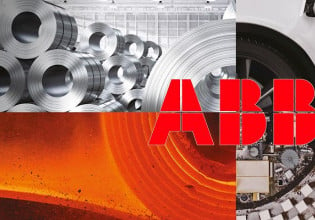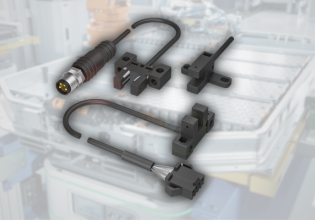Rollon’s Space-Saving, Synchronized TLS Series of Telescoping Linear Actuators
With a high stroke-to-closed length ratio and a single-motor synchronized driving system, Rollon’s TLS Series telescoping linear actuators save space and use less energy.
Rollon Corp. announced the release of its new, space-saving, heavy-load-bearing TLS Series of telescoping linear actuators. Recognized for innovation and expertise—Rollon’s industry experience in linear motion systems, solutions, and services spans 45 years.
Telescoping linear actuators bolster industrial automation processes by providing controlled, heavy load-bearing linear motion. These adaptable tools are used in a wide range of industries and applications, improving production, assembly operations efficiency, and safety.
Rollon’s TLS Series of actuators offer features that help minimize maintenance and enhance product life, while carefully controlling motion, and saving space – particularly between machines and walls or ceilings, and applications with limited vertical clearance.

Rollon’s TLS Series of telescoping linear actuators come with an automated lubrication system, reducing maintenance and prolonging product life. Image used courtesy of Rollon
Accuracy and High Load Tolerance
Telescoping linear actuators are a form of motion device that extends and retracts – similar to a pirate’s telescope. Linear actuators are ideal for applications that call for accurate linear movement.
Telescoping linear actuators are known for having high load capacity, making them ideal for demanding tasks like moving, lifting, and lowering large objects. Linear actuators are found in many machines and production systems, including robotics, assembly and packaging lines, medical imaging equipment, automotive manufacturing, aerospace, and more. Linear actuators also provide mechanical power to raise platforms, and workstation heights, as well as moving and positioning components during production operations.
Depending on the requirements of the individual application, telescoping linear actuators can be controlled manually, using electric motors, pneumatics or hydraulics, or digitally controlled automation systems.
Calculated Movement and Control
Telescoping linear actuators are comprised of several clustered tubular segments that “slide” inside of one another to accommodate gradual extension or retraction. Because of the motor’s linear layout, they are ideal for applications in tight spaces.
A Space-Saving Synchronized System
Telescoping linear actuators offer a longer reach or stroke relative to the device’s unextended length. This offers engineers an advantage when a lengthy linear movement is required to move an object or tool. Telescoping linear actuators can also be programmed to extend or retract in predetermined increments, enabling more calculated and controlled movement.
Rollon’s TLS Series actuators feature a high stroke-to-closed length ratio which means that the actuator can lengthen out a significant distance further than its initial size when retracted.
Practically speaking, a high stroke-to-closed length ratio enables designers and systems engineers to use a relatively small telescoping linear actuator to produce a sizable linear movement. This can be especially helpful when there are physical limitations on the actuator's footprint and a lengthy stroke is required to carry out operations like lifting, placement, or extending machinery or components.

Rollon’s telescoping linear actuators use a synchronized belt system to maximize extension while keeping compact to save space when retracted. Image used courtesy of Rollon
Actuators in the TLS Series also exhibit a max speed of 6 meters per second (m/s), an acceleration of 20 m/s, and a repeatability of ±0.05 millimeters (mm). Customers can choose from four different size options (100, 230, 280, and 360) with up to 3,000 mm stroke length in a single direction.
Another feature to note is the synchronized drive system with just one motor. This design reduces the possibility of one stage extending or retracting quicker than the others, which could cause imbalance or provide a safety danger. This increased safety factor is crucial in applications where user protection comes first.
The synchronized driving mechanism also helps to distribute the weight of the load equally among all of the actuator's stages, preventing any stage from becoming overloaded. This is especially useful when it comes to lifting or moving hefty things.
The synchronized single-motor technology also encourages energy efficiency, which lowers power consumption and operating expenses. The actuator's utility is further improved by the ease with which it may be coordinated with and integrated into different automation and control systems.






